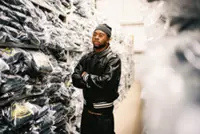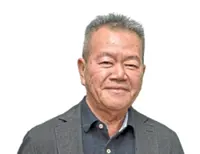One of IWK’s sewage treatment plants in Pantai Dalam, Kuala Lumpur.
MALAYSIANS can consider themselves lucky as we don’t experience severe water scarcity like other countries. Our country is blessed with an abundance of rainfall (average of 2,500 mm annually) and most people have easy access to clean water through the water supply system.
However, over the past decade, water supply disruption often happens, particularly in densely populated areas, like Kuala Lumpur and Selangor. Prolonged dry seasons and water pollution at water treatment plants are among the leading causes of this problem.
Of course, we cannot rule out other factors such as the increase in population and rapid industrialisation that lead to water stress.
We have achieved so much in many fields since gaining our independence in 1957. But in the water supply sector, we still depend heavily on water catchment. This makes us vulnerable to weather variability.
In order to ensure the reliability and sustainability of water supply, there is a need to diversify our nation’s water supply portfolio by incorporating secure, rainfall-independent source of water.
Prof Elimelech of Yale University, United States, a prominent water expert, in his article published in the journal Science said that the only methods that are sustainable to increase water supply beyond what is available from the hydrologic cycle are desalination and water reuse.
Although a great amount of effort has been put in by some countries to alleviate water supply stresses via improved water catchment and distribution system, repair of infrastructure and water conservation, these measures are only sufficient to improve the use of existing water resources.
Compared to the seawater or brackish water desalination process that requires higher capital investment and operating costs, wastewater recycling is more cost competitive and suitable to be considered in our country.
In this article, focus will be placed on the potential of wastewater recycling as an alternative to the existing water supply.
Currently, the effluents discharged into the environment shall comply with the requirements as specified in the Environmental Quality (Sewage) Regulations 2009 and Environmental Quality (Industrial Effluent) Regulations 2009.
For both regulations, only the treated effluent with biochemical oxygen demand of less than 20 mg/L is allowed to discharge according to the Standard A’s requirements. Biochemical oxygen demand is one of the key parameters in the regulations and it is a measurement of the amount of dissolved oxygen needed by microorganisms to decompose organic matters in water.
Since most of the pollutants are mandatory to be removed, this makes the treated effluent generally good in quality and does not bring risks to the environment and public health.
Some people are skeptical about the safety level of reusing treated effluent, but the negative perception towards wastewater reuse needs to change.
Recycling sewage into drinking water has been long practised in other countries.
Singapore has already started the sewage reclamation project in the early 2000s and currently has five sewage reclamation plants that use membrane technology (combination of ultrafiltration and reverse osmosis membrane process) to produce ultra-clean, high-grade reclaimed water (also known as NEWater) that is sufficient to meet up 40% of its current water demand.
In the US, a USD$3bil Pure Water project was recently started in San Diego, California with the target of recycling 30 million gallons of sewage daily in four years and an additional 53 million gallons by 2035.
This water reclamation facility will also use membrane technology as part of the multi-barrier purification process.
Back to Malaysia, our national sewerage company Indah Water Konsortium (IWK) Sdn Bhd has the capability to do so. They are exploring one small capacity water reclamation plant in Setia Alam that produces five million litres per day (MLD) purified water from sewage using membrane technology. The purified water is used to meet the industry demand.
The growing confidence in the membrane performance for wastewater recycling can be reflected by the significant growth of membrane global market size over the past decade.
Currently, there are 7,000 sewage treatment plants managed by IWK that produce approximately 5,000 MLD treated effluent.
The modern centralised sewage treatment plants could make the sewage reuse easier to execute. This is because existing treatment plants already require the treated effluent to meet stringent regulation before discharging into receiving water body. Such treated effluent normally contains low levels of pollutants so that it will not affect the ecosystem.
On the other hand, the wastewater coming out of an industrial process can also be recycled to reduce the dependency of water supply.
Metal machining company AAOsteel in Denmark is one good example of practising industrial wastewater recycling.
The company reuses 95% of the process water from the alkaline automatic rinsing line for its production process.
Besides reducing the process water disposal cost, the money invested by the company on the treatment process was paid back in less than two years.
Separately, American medical devices and health care company Abbott is capable of meeting more than a third of the total water needs at its plant in Rio de Janeiro, Brazil by reusing the wastewater generated. The wastewater facility allowed the plant to increase production by 11% in 2018 without needing more water.
IWK’s ability and experience in managing water reclamation plants (WRPs) can play a key role to provide an alternative water source to meet demands by local industries.
These industries can participate in obtaining the treated bio-effluent from WRPs for industrial use, easing up reliance on raw water that can be put to better use, such as for human consumption.
Moreover, water usage is a fundamental product for nearly every step of the manufacturing and production practices around the world, whether it is used for producing, processing, washing, diluting, cooling, or transporting a product.
Wastewater recycling is becoming more and more important not only to mitigate the pollutants discharged to the receiving water bodies, but also to alleviate the impacts due to unprecedented water supply disruption and water tariff hike.
Currently, our water and sewerage tariffs are among the lowest globally, but we can’t take for granted that it will remain unchanged forever. The company with on-site wastewater recycling facilities would be less impacted by possible water tariff hikes in the future.
The benefit of cost saving due to wastewater reuse is more obvious in industries because their water tariff is significantly higher than domestic.
We must understand that all water on the Earth is recycled over and over again and recycling sewage and industrial wastewater into pure water is unavoidable in the future and should be considered as a proactive strategy to enhance our nation’s water sustainability and security.






